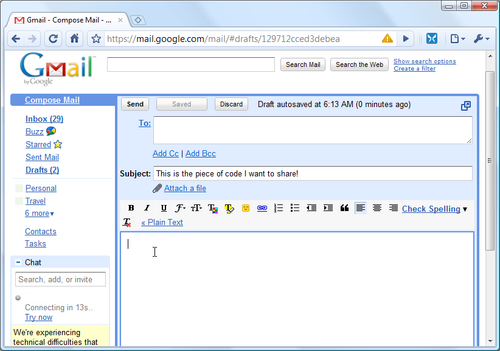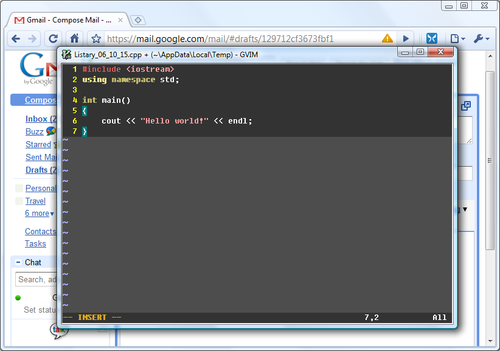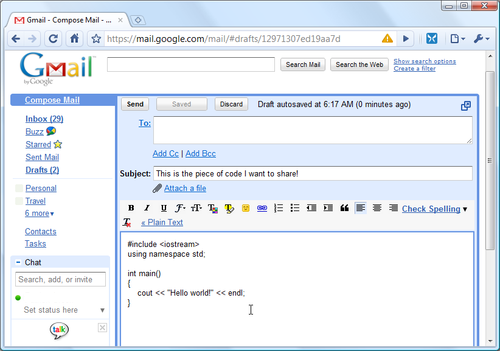Here is a scenario: Say you want to write an email but rather than typing directly into the text box in your browser, you prefer to compose the message in a text editor and then copy the typed message back to the browser.
Or say you want to type a reply in an online discussion board or write a blog post, and you want to use your favorite text editor. The long series of steps involved to open your text editor, copy the text to edit to the editor and copy it back to the original window can be reduced to just 3 keystrokes with an application called Listary.
Listary is actually a search tool for Windows featuring find as-you-type and supporting advanced features like auto-complete, wild cards etc. But Listary is also packed with additional goodies, and one of these allows you to launch your preferred text editor from any application and edit text on it.
For example, we have Gmail open in Chrome and we want to use the text editor Vim to type a reply.
Press Win+A to launch your default text editor (Vim in this case).

Type your reply and press Ctrl+S to save it.

Press Alt+Tab to switch back to Chrome and lo and behold your composed reply is there!

Furthermore, if you already have some text in the compose window these will be copied to the text editor when you open it by pressing Win+A.
This feature of Listary works from within any application – you can launch your text editor from your browser, from a word processor like MS Office or from an email program.
This is useful when you want to take advantage of some advanced features like auto-completing, spell checking and syntax highlighting that are only available in an external text editor. It may also save you from web browser crashes.
Note: It’s important to use Alt+Tab to switch window. Using the mouse doesn’t work.
Thanks Jacob

Comments
Post a Comment